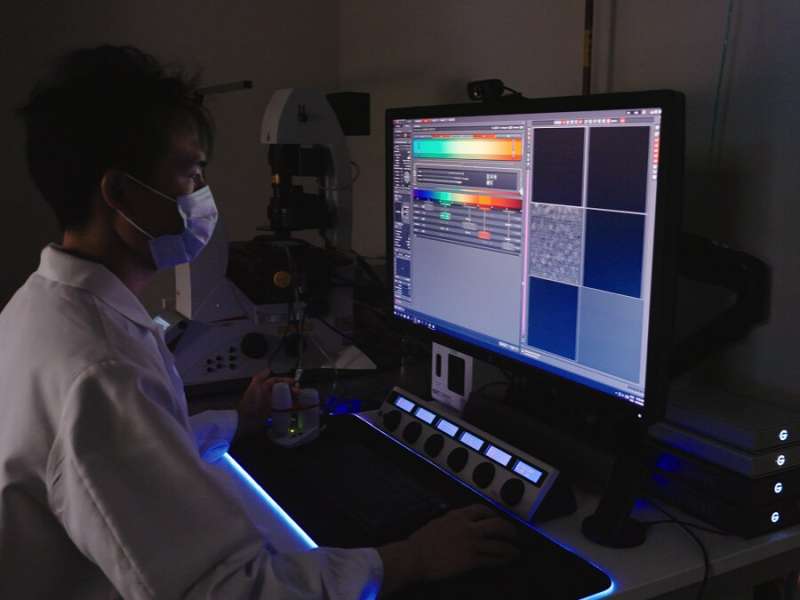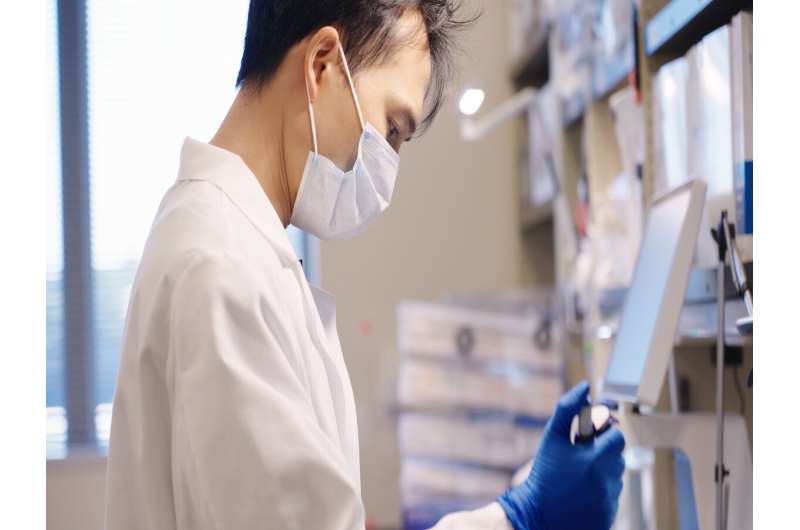
The first protein-based nano-computing agent that functions as a circuit has been created by Penn State researchers. The milestone puts them one step closer to developing next-generation cell-based therapies to treat diseases like diabetes and cancer.
Traditional synthetic biology approaches for cell-based therapies, such as ones that destroy cancer cells or encourage tissue regeneration after injury, rely on the expression or suppression of proteins that produce a desired action within a cell. This approach can take time (for proteins to be expressed and degrade) and cost cellular energy in the process. A team of Penn State College of Medicine and Huck Institutes of the Life Sciences researchers are taking a different approach.
“We’re engineering proteins that directly produce a desired action,” said Nikolay Dokholyan, G. Thomas Passananti Professor and vice chair for research in the Department of Pharmacology. “Our protein-based devices or nano-computing agents respond directly to stimuli (inputs) and then produce a desired action (outputs).”
In a study published in Science Advances, Dokholyan and bioinformatics and genomics doctoral student Jiaxing Chen describe their approach to creating their nano-computing agent. They engineered a target protein by integrating two sensor domains, or areas that respond to stimuli. In this case, the target protein responds to light and a drug called rapamycin by adjusting its orientation, or position in space.
To test their design, the team introduced their engineered protein into live cells in culture. By exposing the cultured cells to the stimuli, they used equipment to measure changes in cellular orientation after cells were exposed to the sensor domains’ stimuli.

Previously, their nano-computing agent required two inputs to produce one output. Now, Chen says there are two possible outputs and the output depends on which order the inputs are received. If rapamycin is detected first, followed by light, the cell will adopt one angle of cell orientation, but if the stimuli are received in a reverse order, then the cell adopts a different orientation angle. Chen says this experimental proof-of-concept opens the door for the development of more complex nano-computing agents.
“Theoretically, the more inputs you embed into a nano-computing agent, the more potential outcomes that could result from different combinations,” Chen said. “Potential inputs could include physical or chemical stimuli and outputs could include changes in cellular behaviors, such as cell direction, migration, modifying gene expression and immune cell cytotoxicity against cancer cells.”
The team plans to further develop their nano-computing agents and experiment with different applications of the technology. Dokholyan, a researcher with Penn State Cancer Institute and Penn State Neuroscience Institute, said their concept could someday form the basis of the next-generation cell-based therapies for various diseases, such as autoimmune diseases, viral infections, diabetes, nerve injury and cancer.
Yashavantha Vishweshwaraiah, Richard Mailman and Erdem Tabdanov of Penn State College of Medicine also contributed to this research.
More information:
Jiaxing Chen et al, A noncommutative combinatorial protein logic circuit controls cell orientation in nanoenvironments, Science Advances (2023). DOI: 10.1126/sciadv.adg1062. www.science.org/doi/10.1126/sciadv.adg1062
Journal information:Science Advances
Provided by
Pennsylvania State University

READ MORE
Next generation patient avatars: Expanding the possibilities with micro-organospheres
Picture depicting Micro-organospheres (MOS) encapsulating primary tissue derived cells prior to demulsification. Credit: Terasaki Institute [...]
Nanostructured rubber-like material with optimal properties could replace human tissue
Researchers at Chalmers have developed a new synthetic rubber-like material with a unique combination of [...]
Scientists produce in vitro model of cell differentiation during early facial development
Human ES cells can now be used to induce structures with regionalized maxillary and mandibular [...]
Dozens of Insects and Spiders May Live in Every Room of Your House
Guess what? You have more roommates than you think. Paul_Cooper/iStock When cockroaches infest a kitchen [...]
Are Prepaid Cards Right for You?
They can make it easier to control spending and avoid debt but at a cost [...]
Generation of lossy mode resonances using perovskite nanofilms
Lossy mode resonance (LMR) device-based on perovskite thin film. Credit: Opto-Electronic Advances (2023). DOI: 10.29026/oea.2024.230072 [...]
The Secrets of Earth’s History May Be in Its Caves
To Larry Edwards, a cave is a time machine. Layne Kennedy A honeycombed cave formed [...]
Life May Have Spread Through the Galaxy Like a Plague
Does this look infected? Harvard-Smithsonian CfA Finding alien life, be it microbes or Vulcans, would [...]